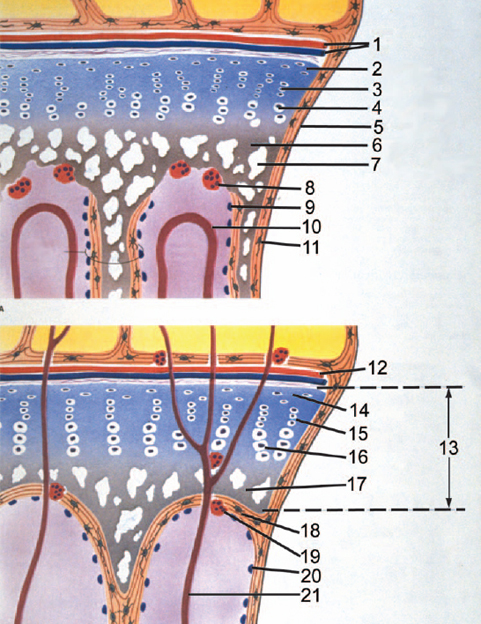Skeletal SystemBone Basics |
Where are blood cells formed in the skeletal system? |
Hematopoiesis (from the Greek hemato, meaning “blood” and poiein, meaning “to make”), or red blood formation, occurs in the red bone marrow in adults. Adult red marrow, found in the proximal epiphysis (the ends) of the femur and humerus, some short bones, and in the vertebrae, sternum, ribs, hip bones, and cranium, is the site of production of all red blood cells (erythrocytes), platelets, and certain white blood cells.

Endochondral ossification is the process where cartilage forms into hard bone. 1 = Epiphyseal artery and vein; 2 = Reserve cartilage; 3 = Proliferating cartilage; 4 = Hypertrophic cartilage; 5 = Periosteum; 6 = Calcified cartilage; 7 = Empty chondrocyte lacuna; 8 = Osteoclast; 9 = Osteoblast; 10 = Vascular loop; 11 = Osteocyte; 12 = Nutritionalartery for epiphyseal plate; 13 = Growth Plate; 14 = Zone of reserve cartilage; 15 = Zone of proliferating cartilage; 16 = Zone of hypertrophied cartilage; 17 = Zone of calcified cartilage; 18 = Transverse bars of bone sealing off plate; 19 = Osteoclast; 20 = Osteoblast; 21 = Metaphyseal artery perforating plate. (From Rubin, E., M.D., and Farber, J. L., M.D. Pathology. 3rd Ed. Philadelphia: Lippincott, Williams & Wilkins, 1999.)
